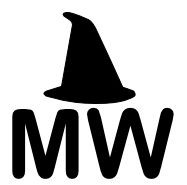The following article by Tommie James talks about power of COBOL language and its limitations. He also describes what is legacy modernization and why it can be fruitful to IT companies.
The COBOL Legacy Language by Tommie James
COmmon Business-Oriented Language, commonly-known as COBOL, has been around for almost 50 years. But, the utilization and support for the programming language still remains.
COBOL is a product of the shared initiatives of several government offices and computer manufacturers of its day, in the hope of developing a sophisticated language for business, finance and administrative systems and to utilize the technological hardware and software designs available during the time COBOL’s use was at its peak. ; ; ; ; COBOL, through the years, has developed a massive fan base of computer manufacturers, programmers and users, and is still being considered as one of the most widely used computer languages by: * government agencies * military offices * commercial enterprises * educational institutions * Operating systems such as Microsoft Windows, IBM, as well as Unix and Linux. There are many reasons why people coming from various sectors of private and government institutions prefer using COBOL over other computer languages, even today. 1. COBOL has been a language-of-choice for business, financial and administrative systems worldwide. 2. COBOL is capable of dealing with a diverse set of processing procedures. 3. COBOL is one of the most widely used computer languages for computer interaction or client-server communication. 4. Throughout the years COBOL has developed a very large user base and hundreds and thousands of programmers have been immersed in the COBOL language. A number of programmers are capable of providing support and maintenance for systems developed using the COBOL language. 5. A lot of mission-critical business systems around the world have been developed using the COBOL language. 6. COBOL is very easy to learn, to maintain and to document. COBOL is a self-documenting language system and has been always been praised for its readability. 7. COBOL is very portable, and is cross-platform efficient. It can be moved around different standard hardware and software systems with little or no risk of losing valuable data. 8. COBOL is a scalable language, and it can be developed using modern compilers and can even be modified into newer business applications using proper legacy modernization procedures. As the features and advantages of using the COBOL language have been highlighted above, there are also few factors raised by modern-day programmers and users against the use of the COBOL language. a. A typical file or data-oriented business application for a government agency may contain more than one million / 1,000,000 lines of code. This signifies that a COBOL application is not only bulky but also very time-consuming to develop. b. Due to its very rigid format, COBOL is not preferred for scientific applications. c. As newer technologies are introduced a lot of expectations are being raised on the COBOL language to deliver a more user-friendly approach, as well as faster and more enhanced capabilities for calculations and data organization. It will take a lot of time, effort and money to be able to develop or meet those requirements using the COBOL language. The Legacy Modernization solution Building around the disadvantages of the COBOL language while enhancing its stable features to meet the demands of a more efficient, speedy, and quality-driven technological revolution, a lot of users are looking towards modern languages like JSP, HTML and Java to answer the questions and resolve disappointments of users regarding the limited functionality of the COBOL language to adapt to this rapidly evolving computer age. There are several reasons why IT managers and programmers embrace the legacy modernization choice when dealing with a legacy language system such as COBOL: a. Opportunities for more rapid and quality-driven architectures force users to seek more flexible languages that can easily adapt to more modern hardware, while at the same time maintain compatibility with older hardware systems. b. Legacy modernization provides an opportunity to utilize and expand the life of COBOL applications, while ensuring that business functions and structures are not only retained but also optimized for use with more modern business architectures. c. Legacy modernization or migration is a preferred step for companies that are going into mergers or are willing to enforce measures to easily adapt to modern systems and language environments, with the hope of minimizing expenses, improving application performance, while limiting risks and ensure a more competitive advantage in the global market. ResQSoft, Inc. is one of the top companies focused on rapidly and efficiently creating and re-developing software code and applications. ResQSoft uses a systematic approach to view functionality in different languages as generic items, that recur over and over from one system to the next. ResQSoft is capable of handling old and new applications and languages. Legacy modernization and legacy migration are some of the services handled by ResQSoft.
For fast and high-quality legacy modernization service, please visit the ResQSoft website at http://www.ResQSoft.com
About the Author:-
Tommie James writes regularly about computers related topics. I hope you enjoy this article.
